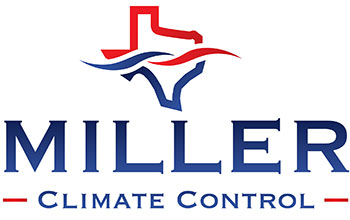
A furnace is usually a background player in your home, keeping you warm in the cold winter months. It often isn't noticed until a malfunction appears.
One cause might be that your furnace has a cracked heat exchanger. It can potentially be hazardous, so it’s critical to learn the signs of a cracked heat exchanger and what to do if you are worried that is the problem.
What Is a Heat Exchanger in a Furnace?
A heat exchanger helps transition heat from the combustion chamber inside your furnace to the air that moves inside the ventilation. It usually does this through coils or tubes that warm the air while acting as a barrier to keep gas produced in the combustion chamber, called flue gasses, from escaping out into your home.
Is a Cracked Heat Exchanger Dangerous?
Thanks to its important role, it shouldn't come as a surprise that a broken heat exchanger can be hazardous. A damaged heat exchanger can enable dangerous gasses – including carbon monoxide, which can be lethal – to circulate across your home.
For obvious reasons, do NOT turn on your heating if you believe it has a cracked heat exchanger, as letting it run could make the whole household ill. Contact an HVAC professional immediately if you are worried your heater has a cracked heat exchanger that should be repaired.
Four Symptoms of a Cracked Heat Exchanger:
- Furnace switches off: A cracked heat exchanger could cause your furnace to switch off.
- Unusual Smells: If the air coming out of your furnace has an intense chemical odor, it could be an indicator that gas is slipping through cracks in your heat exchanger. These byproducts, which can smell like formaldehyde, are a significant warning sign.
- Carbon monoxide alarm initiates or you notice poisoning symptoms: If a cracked heat exchanger is emitting carbon monoxide in your home, your carbon monoxide alarm could go off or family members might start experiencing signs of carbon monoxide poisoning. Side effects include headaches, dizziness, weakness, nausea, vomiting or feeling sleepy. If an alarm goes off or you feel unusually tired, leave the home as soon as you can and then call for help.
- Soot: If you spot black sooty buildup on the exterior of your furnace, it’s an indication something could be seriously wrong.
What to Do if Your Furnace Heat Exchanger is Cracked
If you worry your furnace has a cracked heat exchanger, call a pro experienced in furnace installation Georgetown right away so they can examine your system and, if necessary, handle a furnace heat exchanger replacement. Costs will differ depending on the situation, but estimates can roughly suggest $1,000 to $3,000.
However, the good news is that heat exchangers are regularly included in the warranty. You should confirm the warranty paperwork on your furnace, since while the warranty won't always cover the entire cost of repairs, it could significantly lower your bill.
How to Avoid a Cracked Heat Exchanger in Your Home
One of the best ways to minimize the risk of problems in your furnace overall is via regular furnace maintenance. Furnaces provide the best possible return on investment when they operate efficiently. Hiring a certified professional to check your furnace for broken-down parts, clogs in the air filters and other common problems can help you avoid getting a big bill later on.
It’s also helpful to review your furnace filters every few months – it’s ideal some filters be replaced every 90 days or sooner if they are dirty or grimy. While the filters are not part of the heat exchanger itself, the strain of pulling air through a clogged filter makes your entire furnace work longer to complete its job. And the harder your furnace works, the more strain components like the heat exchanger will experience.

